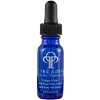What's inside
What's inside
 Key Ingredients
Key Ingredients

 Benefits
Benefits

 Concerns
Concerns

No concerns
 Ingredients Side-by-side
Ingredients Side-by-side

Water
Skin ConditioningSodium Hyaluronate
HumectantPanthenol
Skin ConditioningPentylene Glycol
Skin ConditioningButylene Glycol
HumectantAlteromonas Ferment Extract
Skin ConditioningAcetyl Tetrapeptide-3
Skin ProtectingSorbitol
HumectantAscophyllum Nodosum Extract
Skin ConditioningAsparagopsis Armata Extract
Skin ProtectingMagnolia Officinalis Bark Extract
AntimicrobialVitis Vinifera Seed Extract
AntimicrobialTocopherol
AntioxidantLecithin
EmollientMaltodextrin
AbsorbentComb Extract
Skin ConditioningPanax Ginseng Extract
AntioxidantIlex Paraguariensis Leaf Extract
PerfumingZingiber Officinale Root Extract
MaskingAlthaea Officinalis Root Extract
Skin ConditioningChrysanthellum Indicum Extract
Skin ConditioningCamellia Sinensis Leaf Extract
AntimicrobialAvena Sativa Bran
AbrasiveAvena Sativa Kernel Extract
AbrasiveSodium Metabisulfite
AntioxidantCaprylyl Glycol
EmollientPhenoxyethanol
PreservativeHexylene Glycol
EmulsifyingTetrasodium EDTA
Water, Sodium Hyaluronate, Panthenol, Pentylene Glycol, Butylene Glycol, Alteromonas Ferment Extract, Acetyl Tetrapeptide-3, Sorbitol, Ascophyllum Nodosum Extract, Asparagopsis Armata Extract, Magnolia Officinalis Bark Extract, Vitis Vinifera Seed Extract, Tocopherol, Lecithin, Maltodextrin, Comb Extract, Panax Ginseng Extract, Ilex Paraguariensis Leaf Extract, Zingiber Officinale Root Extract, Althaea Officinalis Root Extract, Chrysanthellum Indicum Extract, Camellia Sinensis Leaf Extract, Avena Sativa Bran, Avena Sativa Kernel Extract, Sodium Metabisulfite, Caprylyl Glycol, Phenoxyethanol, Hexylene Glycol, Tetrasodium EDTA
Ingredients Explained
These ingredients are found in both products.
Ingredients higher up in an ingredient list are typically present in a larger amount.
Butylene Glycol (or BG) is used within cosmetic products for a few different reasons:
Overall, Butylene Glycol is a safe and well-rounded ingredient that works well with other ingredients.
Though this ingredient works well with most skin types, some people with sensitive skin may experience a reaction such as allergic rashes, closed comedones, or itchiness.
Learn more about Butylene GlycolCaprylyl Glycol is a humectant and emollient, meaning it attracts and preserves moisture.
It is a common ingredient in many products, especially those designed to hydrate skin. The primary benefits are retaining moisture, skin softening, and promoting a healthy skin barrier.
Though Caprylyl Glycol is an alcohol derived from fatty acids, it is not the kind that can dry out skin.
This ingredient is also used as a preservative to extend the life of products. It has slight antimicrobial properties.
Learn more about Caprylyl GlycolPanthenol is a common ingredient that helps hydrate and soothe the skin. It is found naturally in our skin and hair.
There are two forms of panthenol: D and L.
D-panthenol is also known as dexpanthenol. Most cosmetics use dexpanthenol or a mixture of D and L-panthenol.
Panthenol is famous due to its ability to go deeper into the skin's layers. Using this ingredient has numerous pros (and no cons):
Like hyaluronic acid, panthenol is a humectant. Humectants are able to bind and hold large amounts of water to keep skin hydrated.
This ingredient works well for wound healing. It works by increasing tissue in the wound and helps close open wounds.
Once oxidized, panthenol converts to pantothenic acid. Panthothenic acid is found in all living cells.
This ingredient is also referred to as pro-vitamin B5.
Learn more about PanthenolPentylene glycol is typically used within a product to thicken it. It also adds a smooth, soft, and moisturizing feel to the product. It is naturally found in plants such as sugar beets.
The hydrophilic trait of Pentylene Glycol makes it a humectant. As a humectant, Pentylene Glycol helps draw moisture from the air to your skin. This can help keep your skin hydrated.
This property also makes Pentylene Glycol a great texture enhancer. It can also help thicken or stabilize a product.
Pentylene Glycol also acts as a mild preservative and helps to keep a product microbe-free.
Some people may experience mild eye and skin irritation from Pentylene Glycol. We always recommend speaking with a professional about using this ingredient in your routine.
Pentylene Glycol has a low molecular weight and is part of the 1,2-glycol family.
Learn more about Pentylene GlycolSodium Hyaluronate is hyaluronic acid's salt form. It is commonly derived from the sodium salt of hyaluronic acid.
Like hyaluronic acid, it is great at holding water and acts as a humectant. This makes it a great skin hydrating ingredient.
Sodium Hyaluronate is naturally occurring in our bodies and is mostly found in eye fluid and joints.
These are some other common types of Hyaluronic Acid:
Learn more about Sodium HyaluronateWater. It's the most common cosmetic ingredient of all. You'll usually see it at the top of ingredient lists, meaning that it makes up the largest part of the product.
So why is it so popular? Water most often acts as a solvent - this means that it helps dissolve other ingredients into the formulation.
You'll also recognize water as that liquid we all need to stay alive. If you see this, drink a glass of water. Stay hydrated!
Learn more about Water